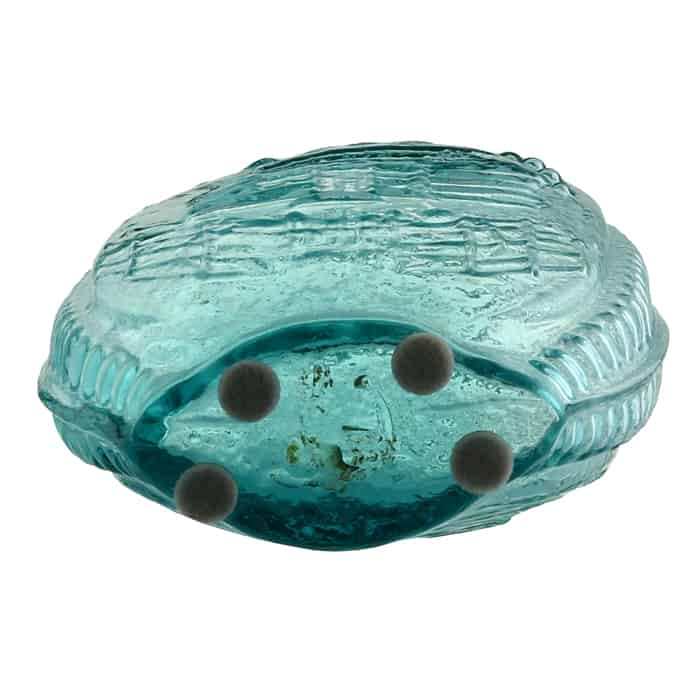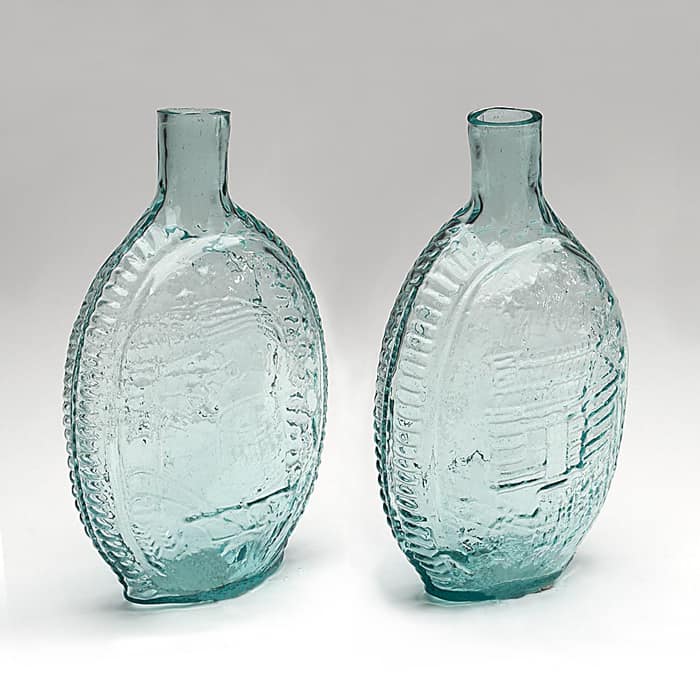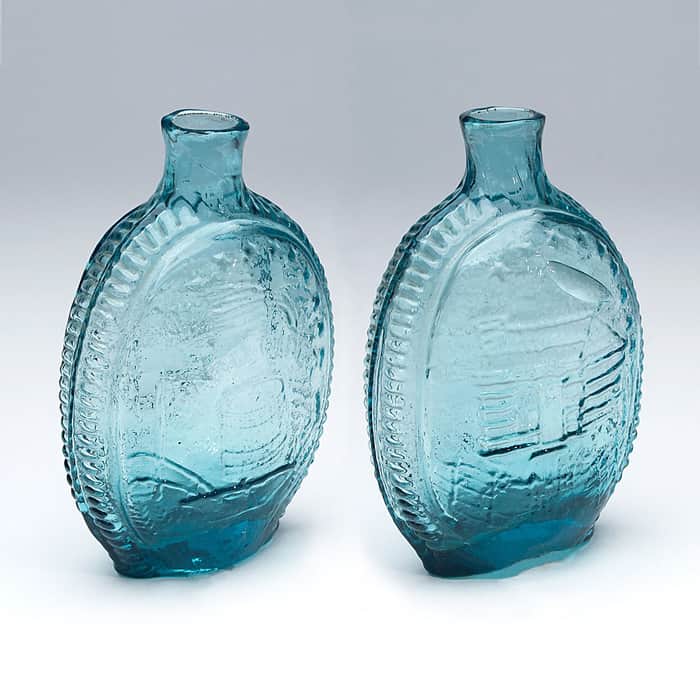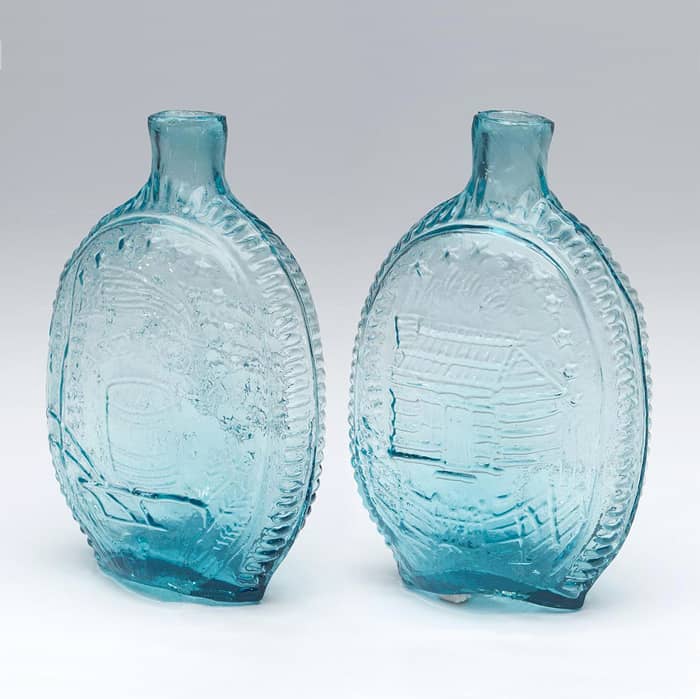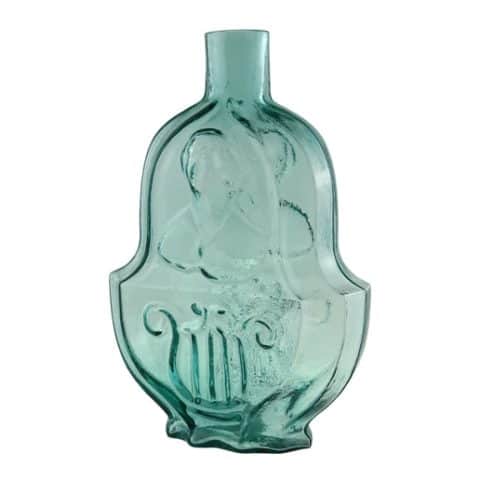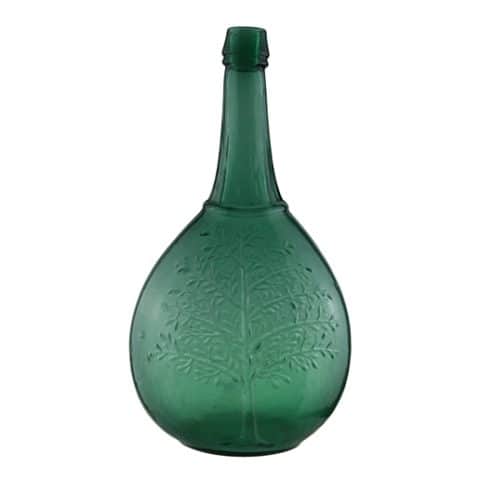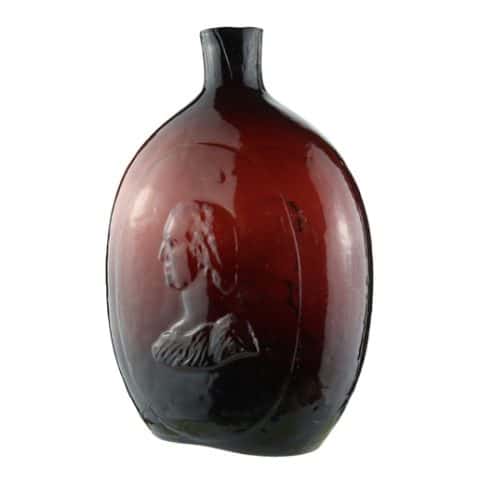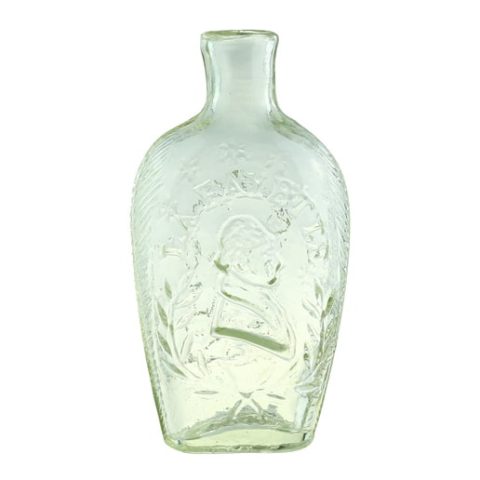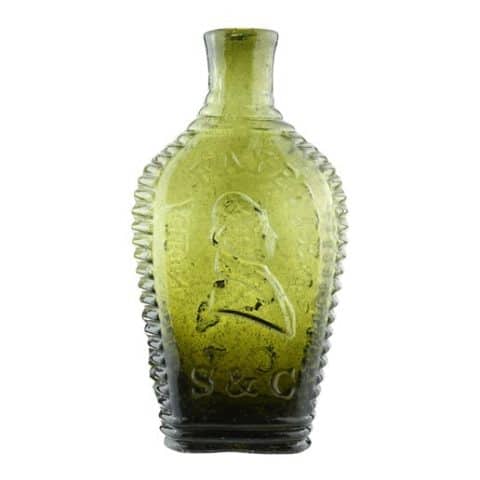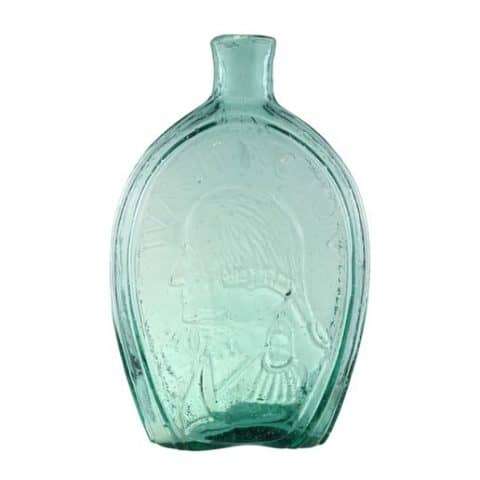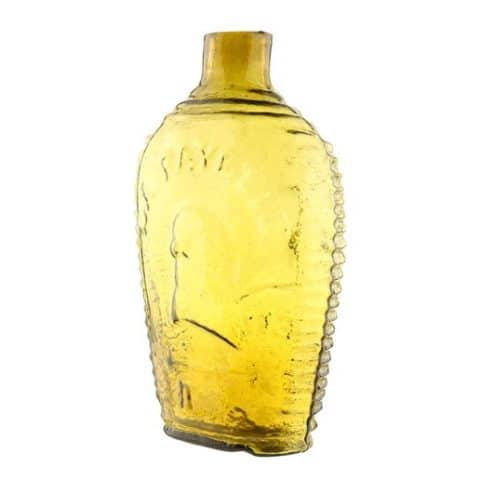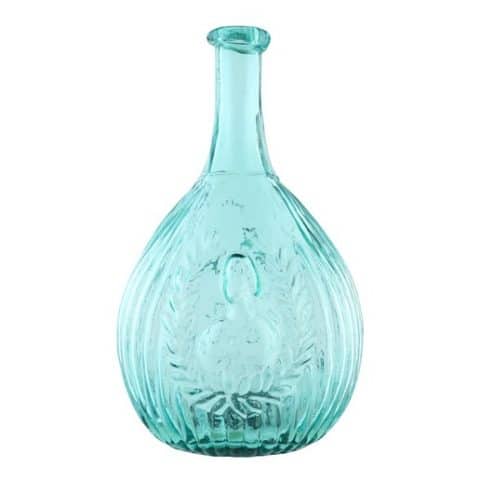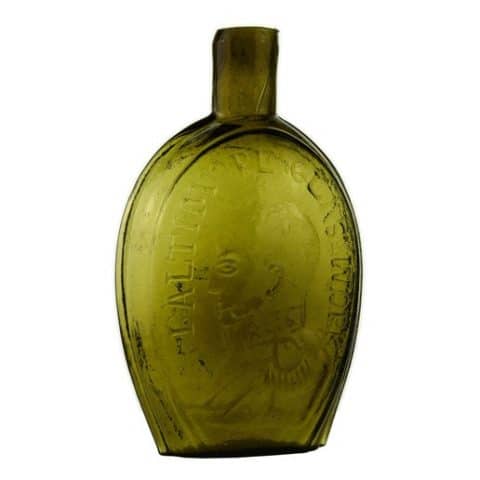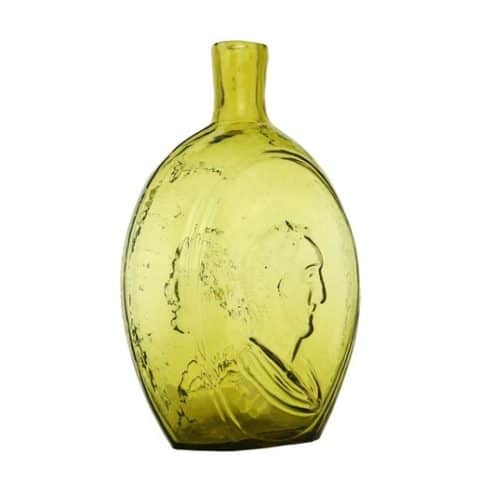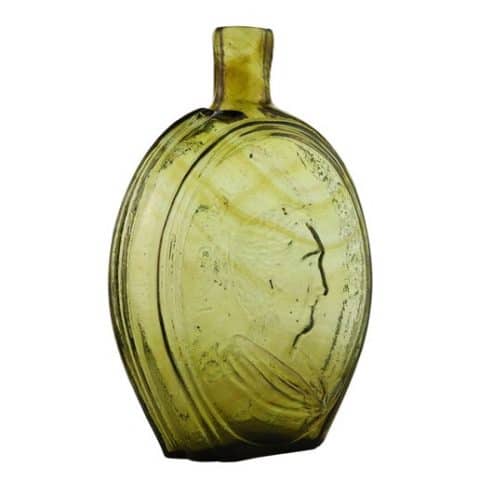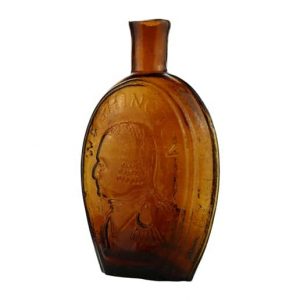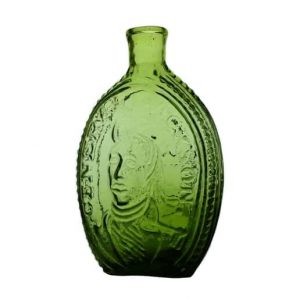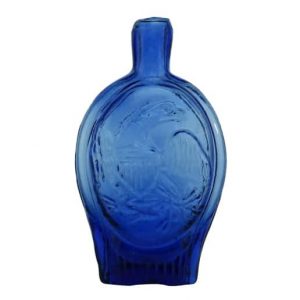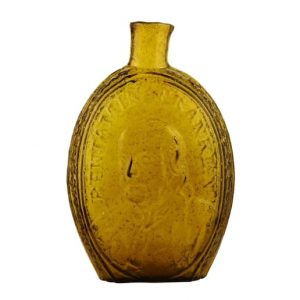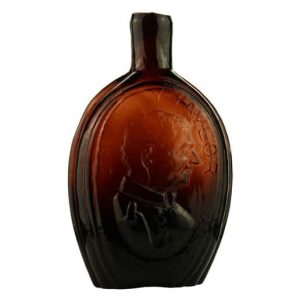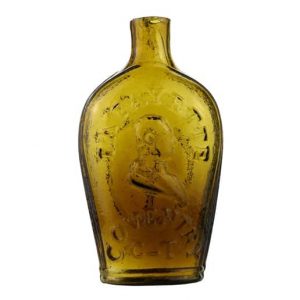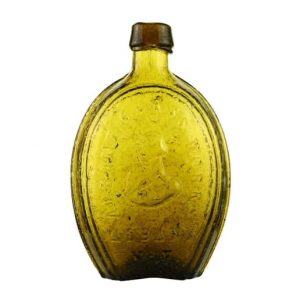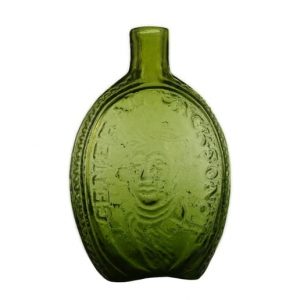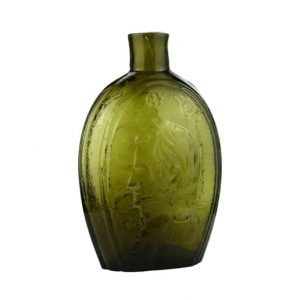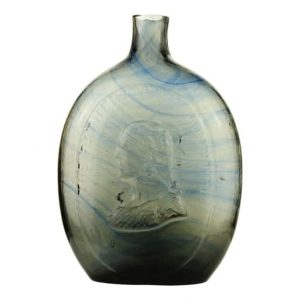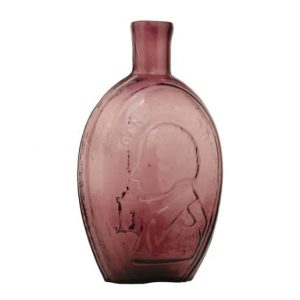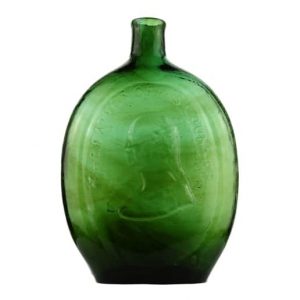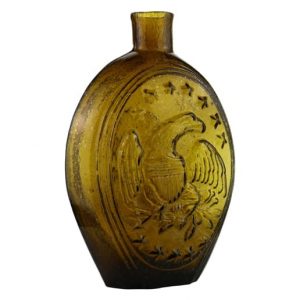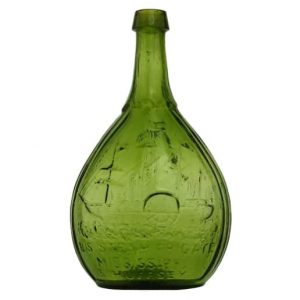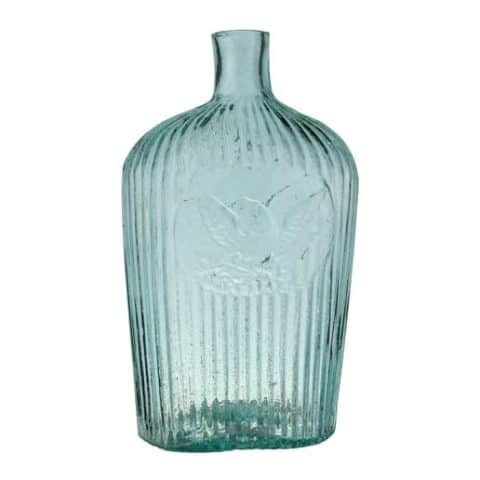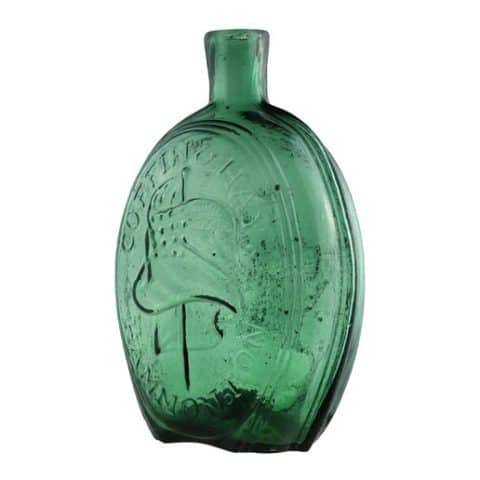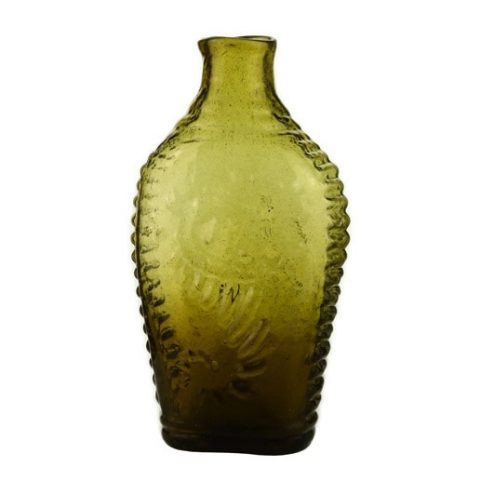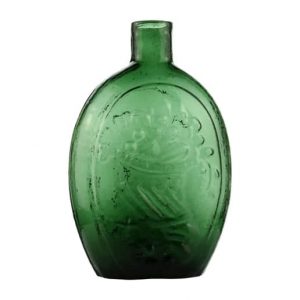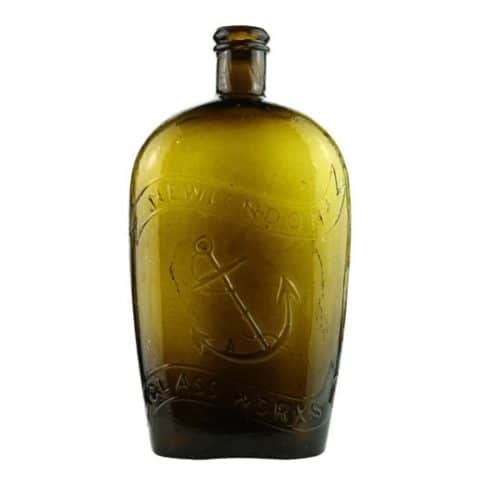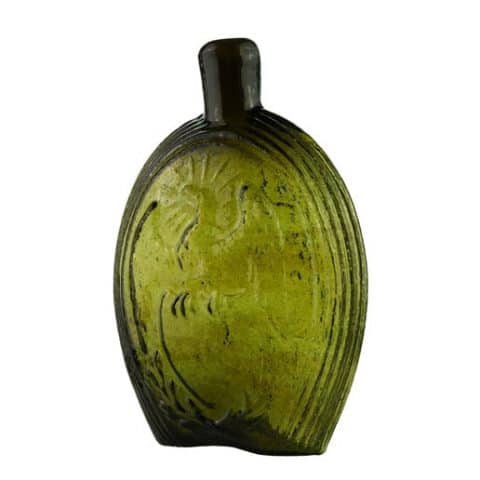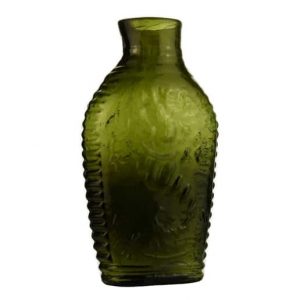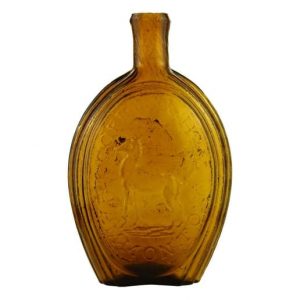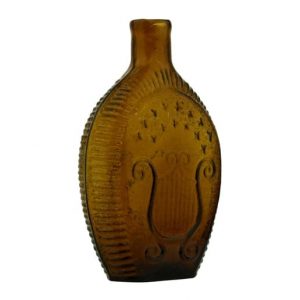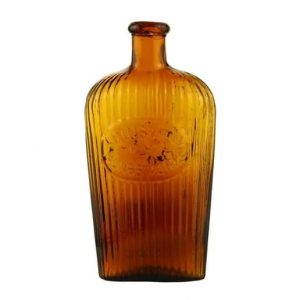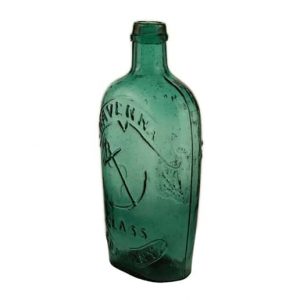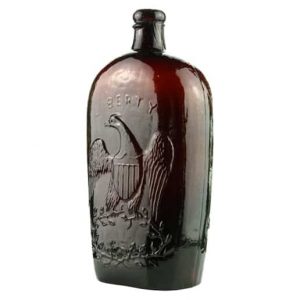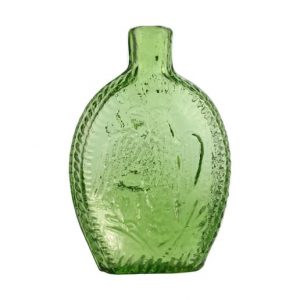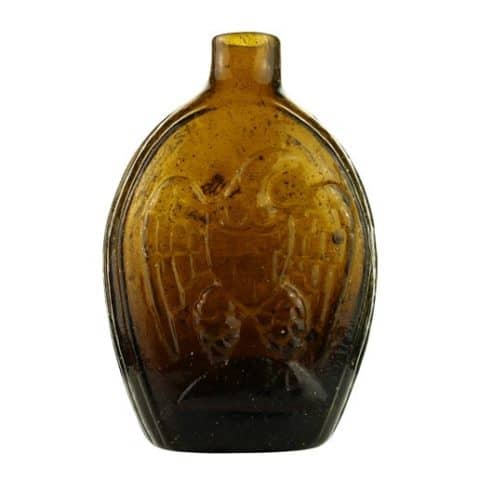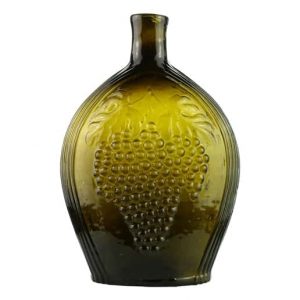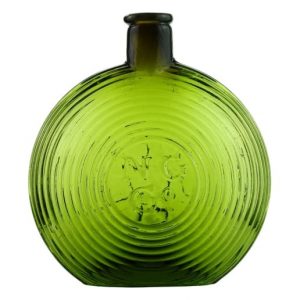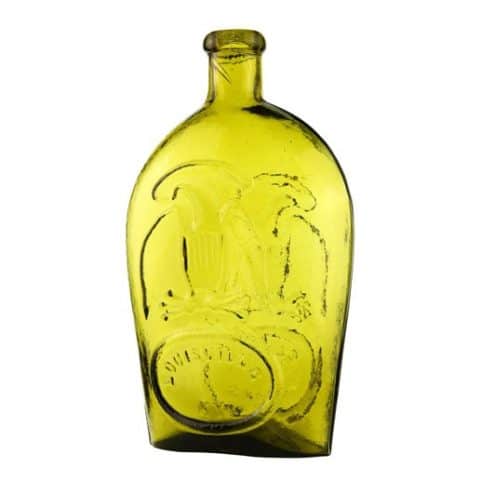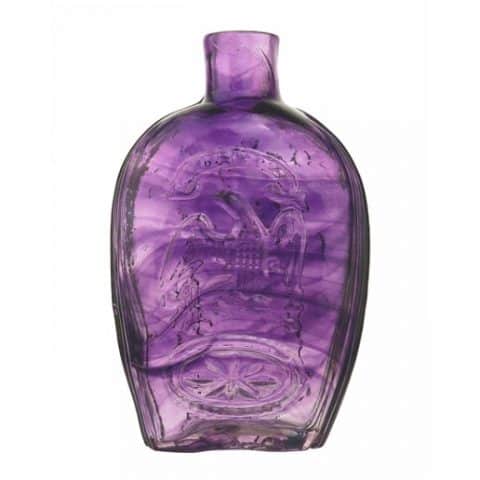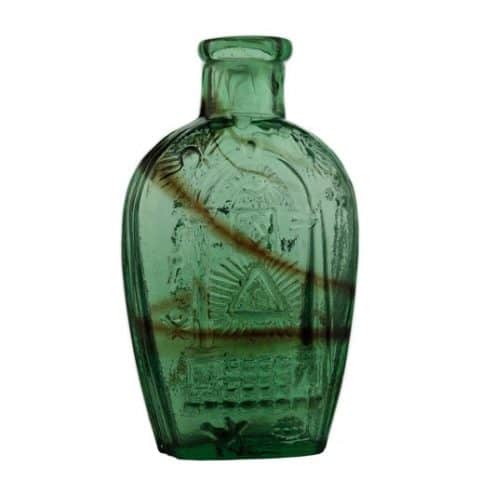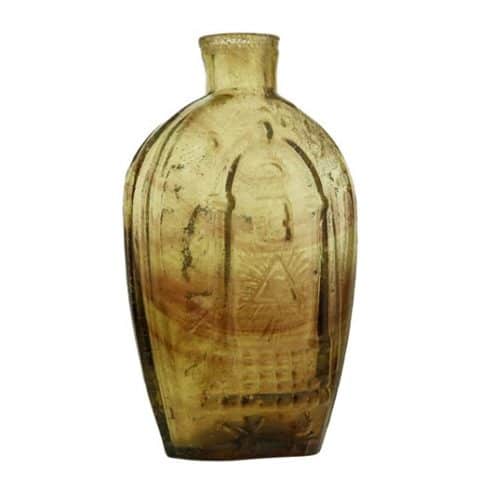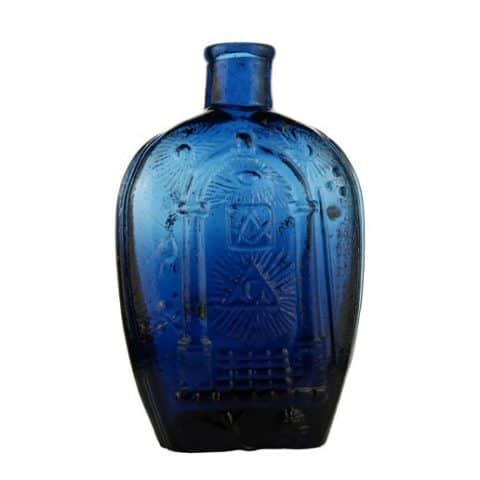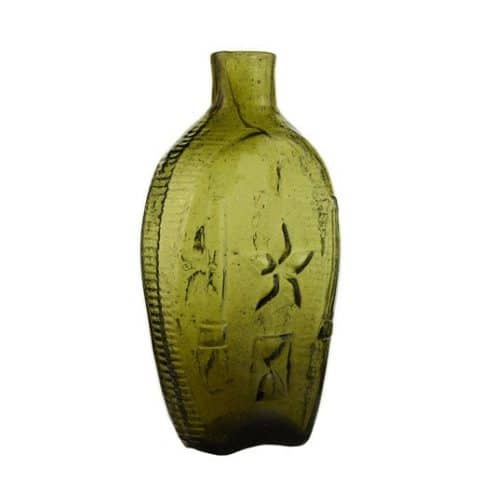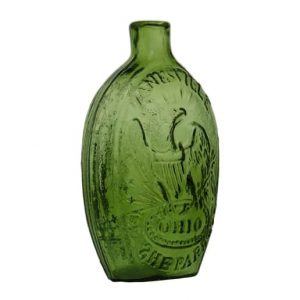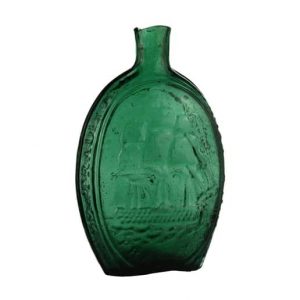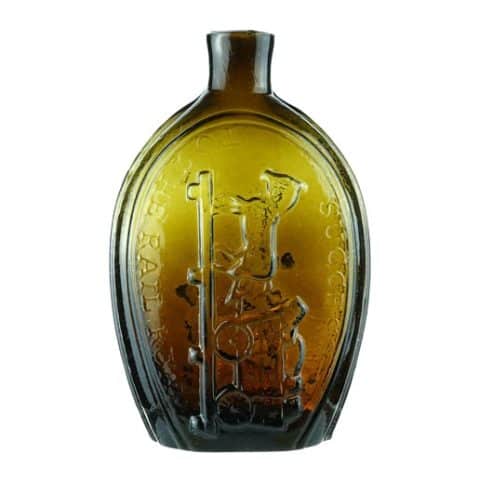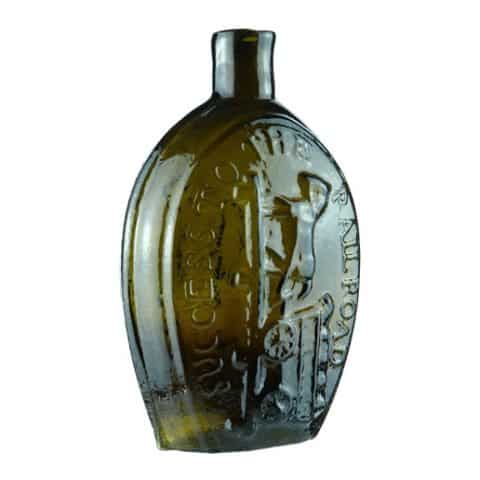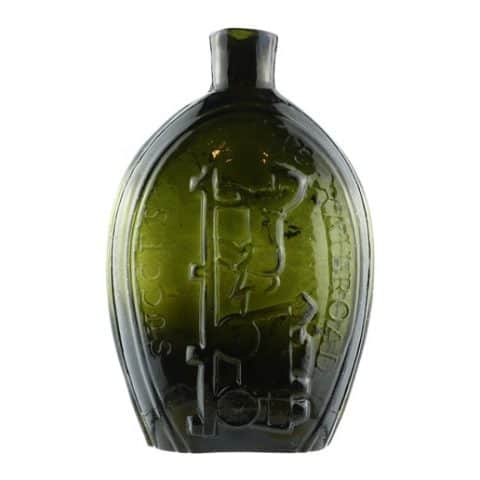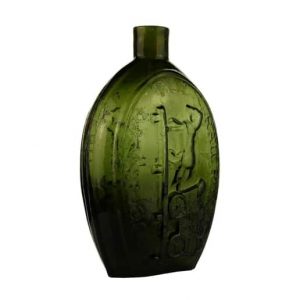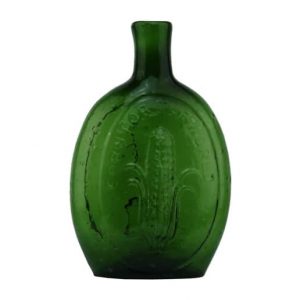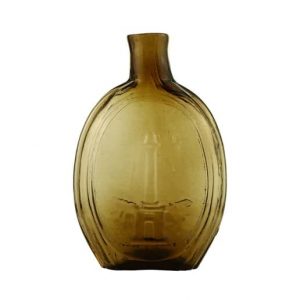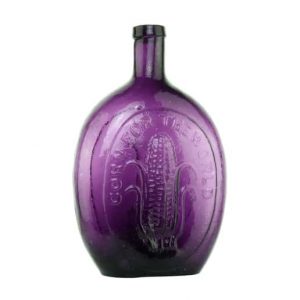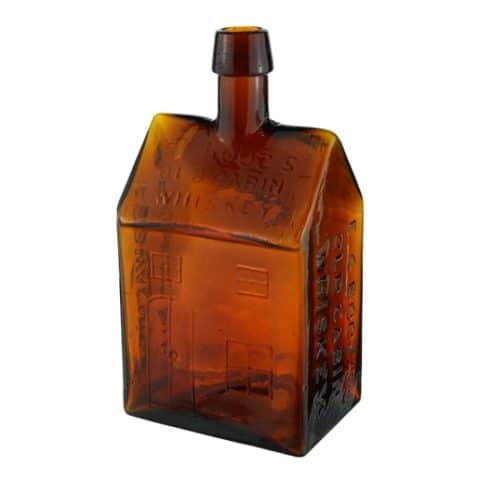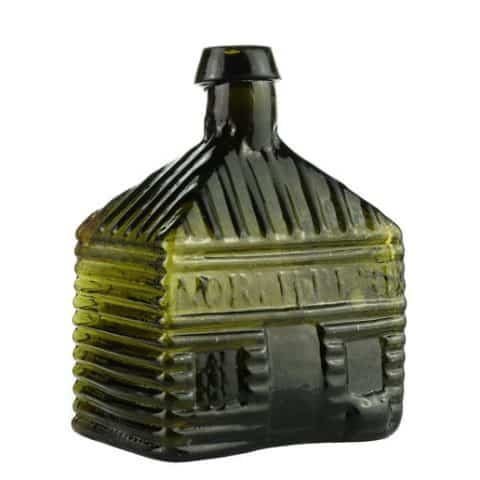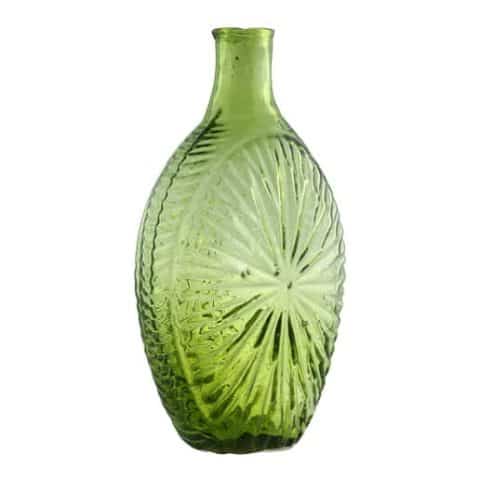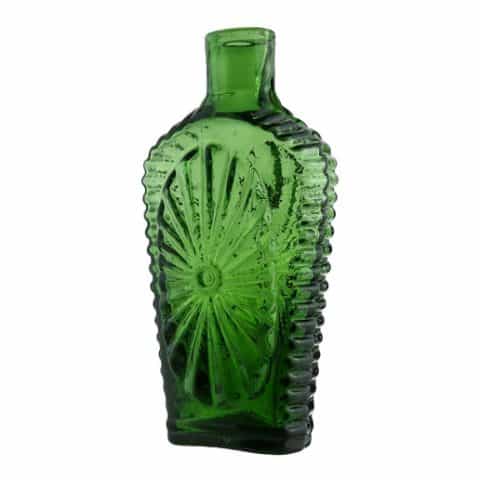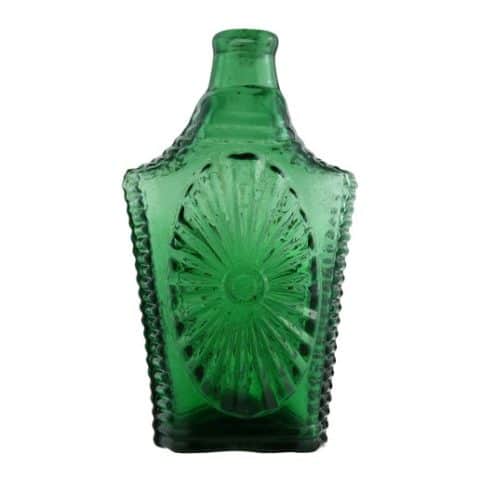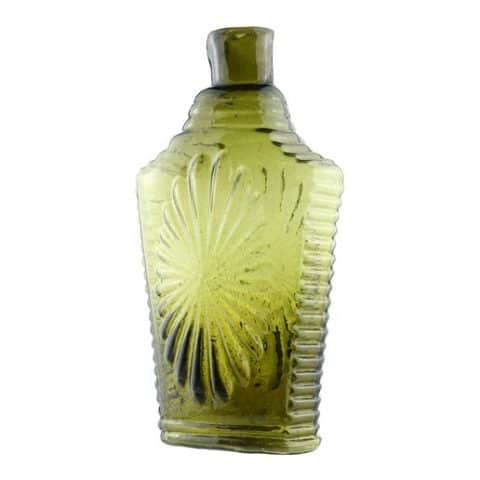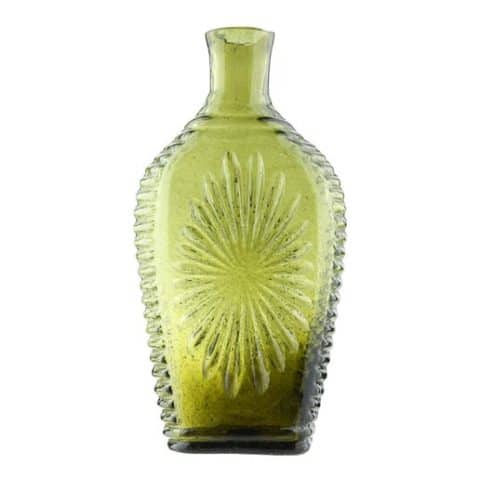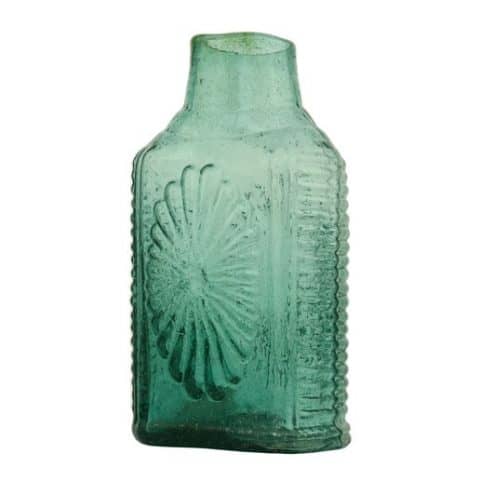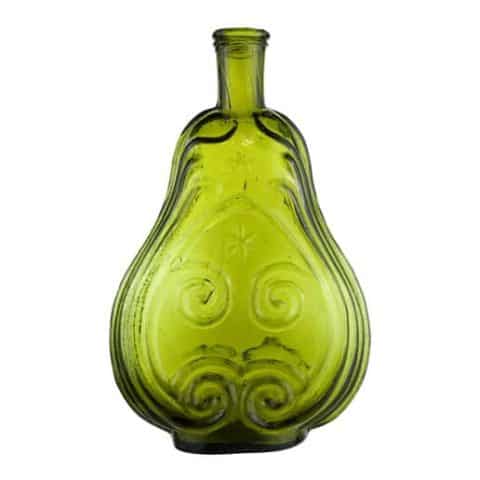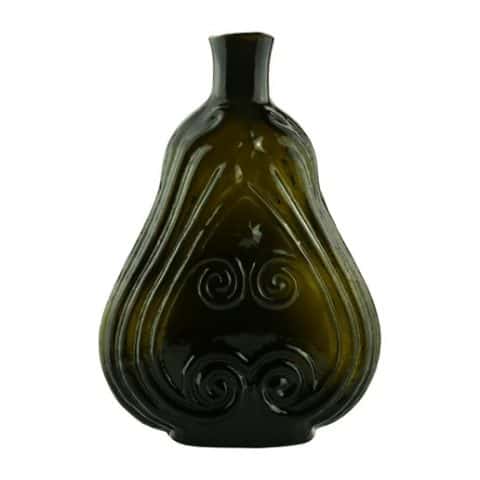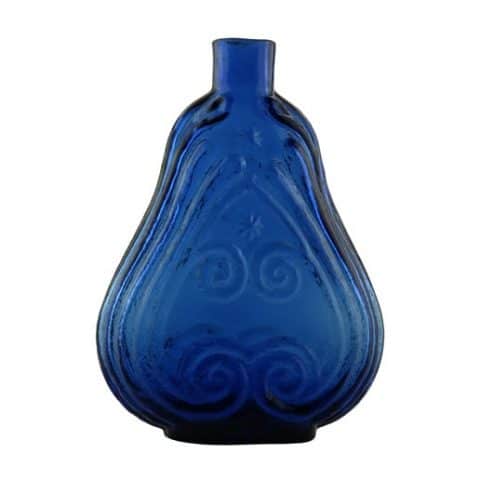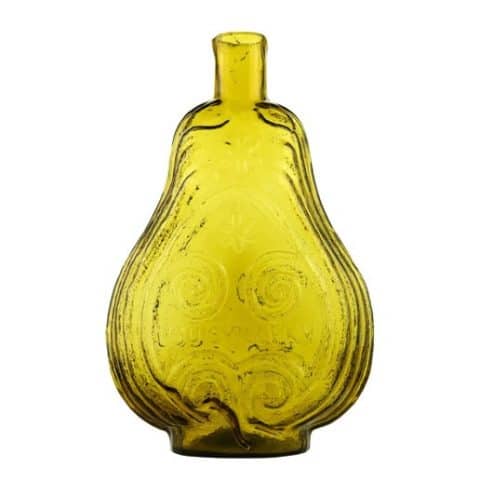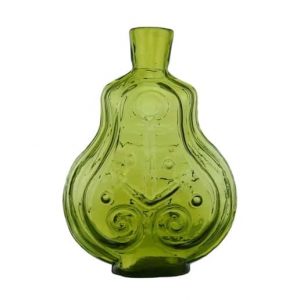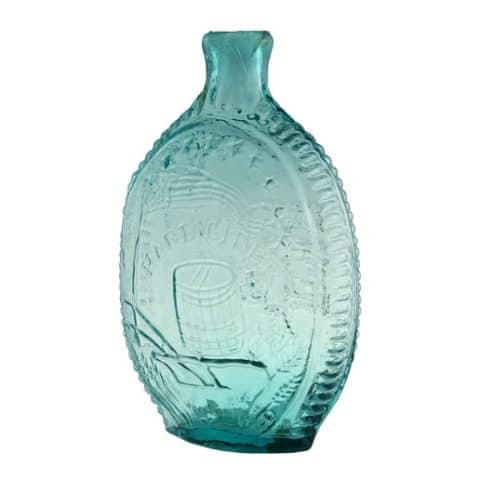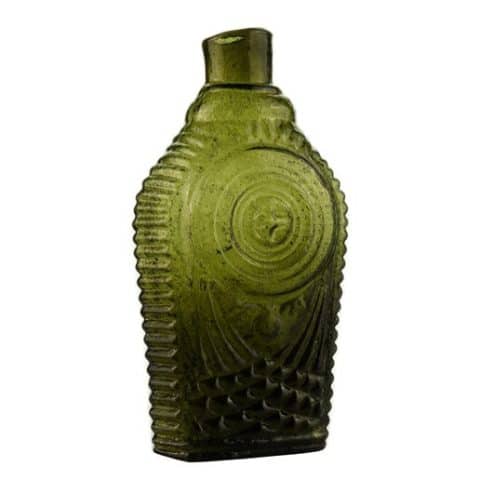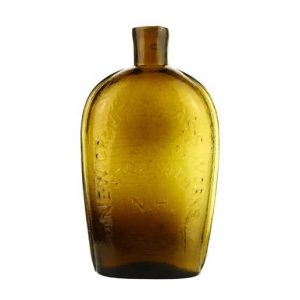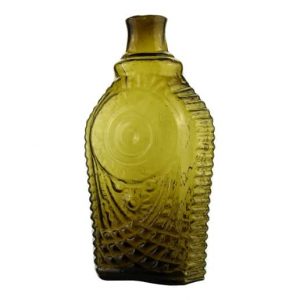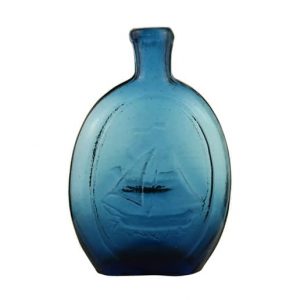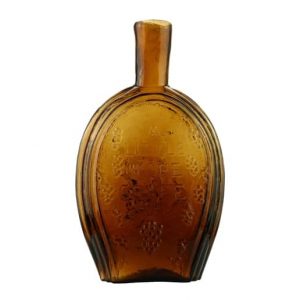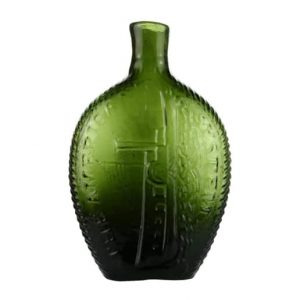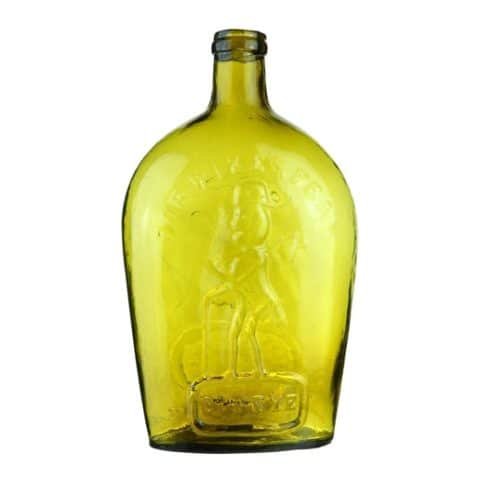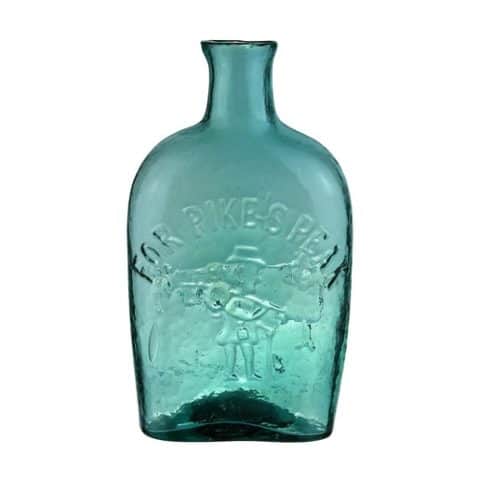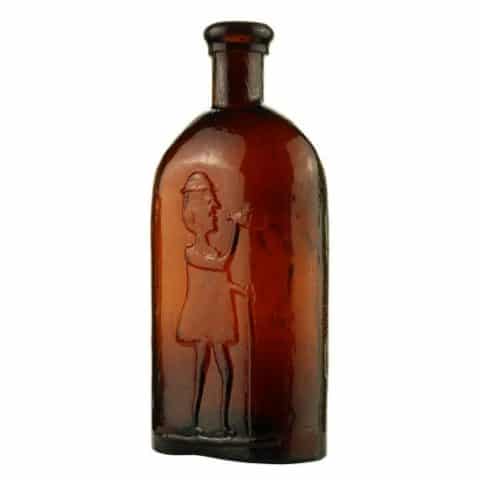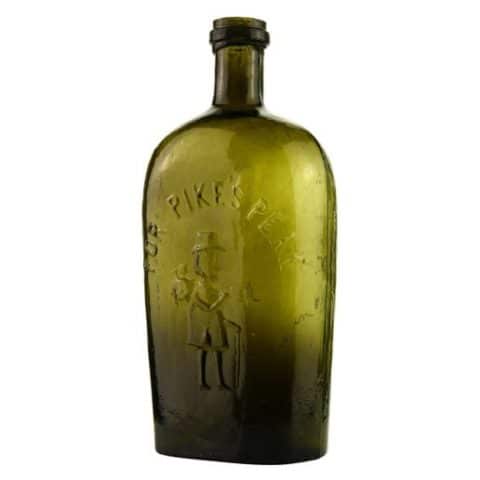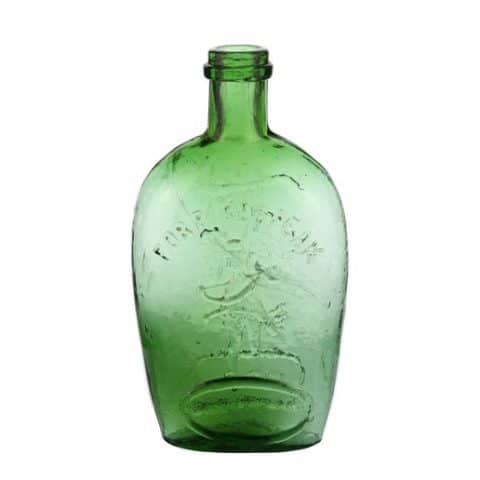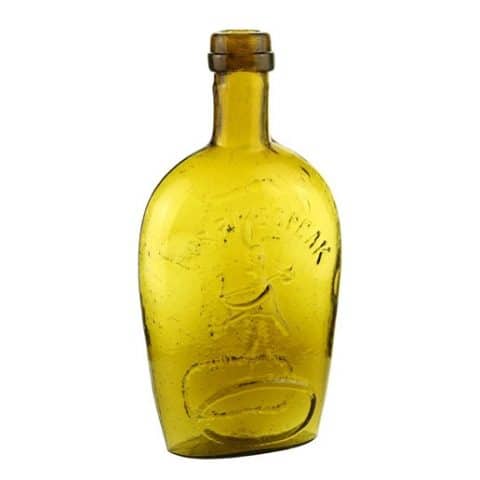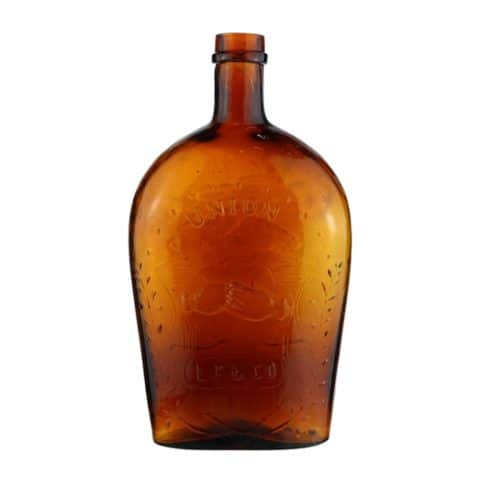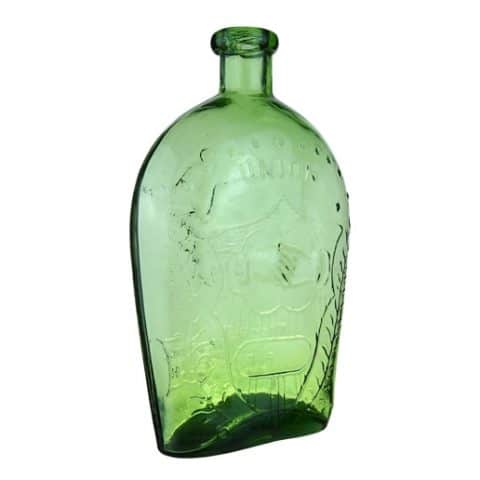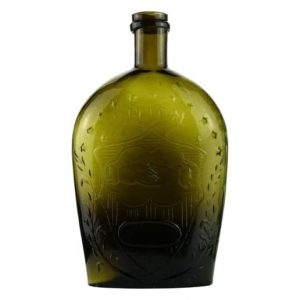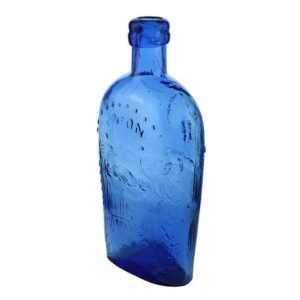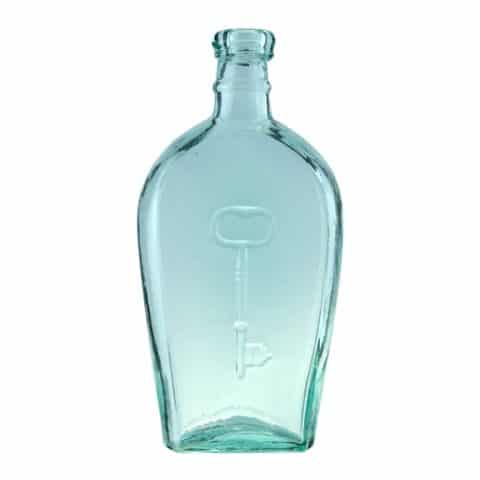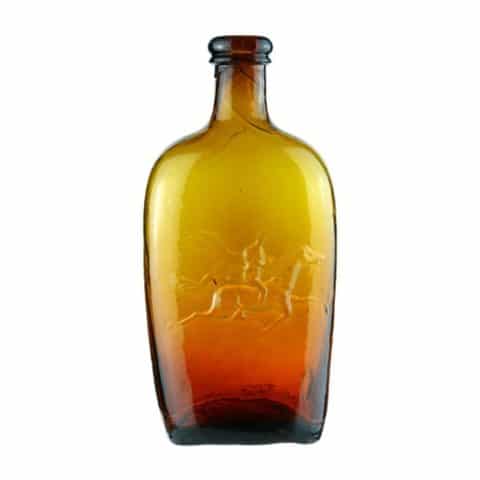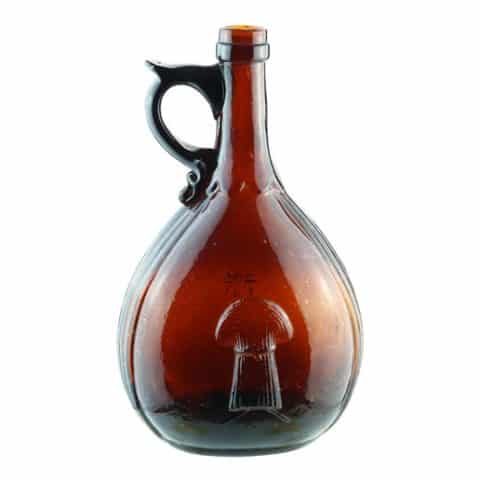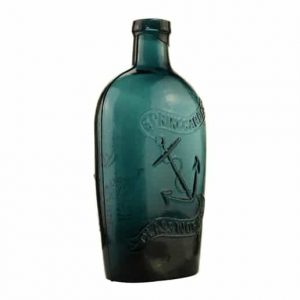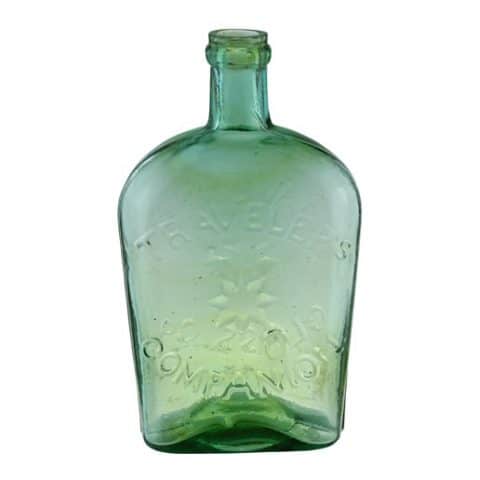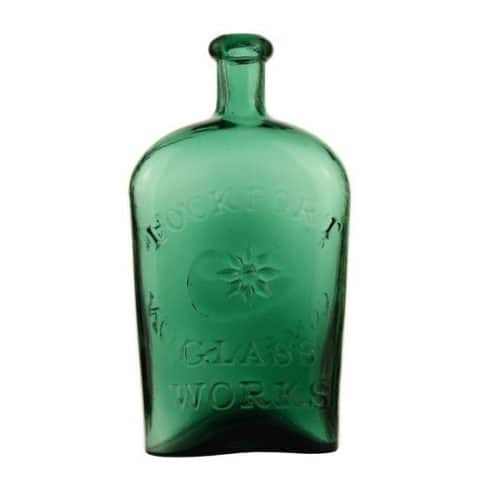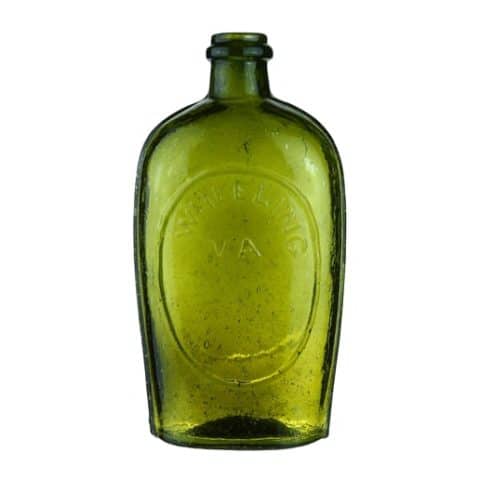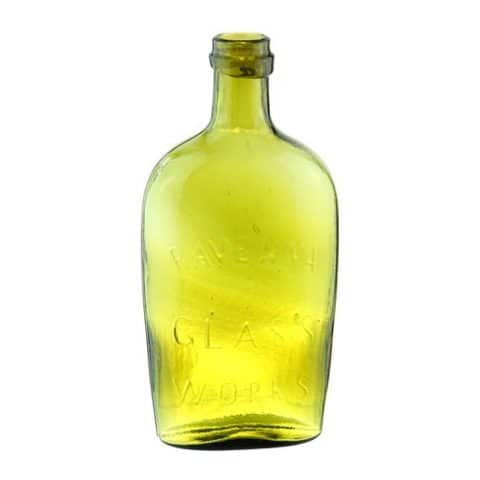GX-22 • “Hard Cider” – Log Cabin Historical Flask
GX – 22
“Hard Cider” – Log Cabin
Historical Flask
Early Pittsburgh District
Blue Green Aquamarine Pint
Provenance: Michael George Collection

The Early Pittsburgh District GX-22 “Hard Cider” – Log Cabin is an extremely rare historical flask with an important story. This brilliant ice blue-green aquamarine pint represents one of the finest examples.
When looking at the obverse side of the flask, there are designs on large oval panels. An embossed pictorial log cabin features a door at the right and a single window with four panes adjoining the door to the left. The chimney is positioned on the left end of the gable roof. Above the cabin in a partial semicircle are nine small 5-pointed stars. Beneath the cabin in a semicircle is a rail fence with a gate at the center.

The reverse side of the flask features an embossed American flag and barrel. The American flag is positioned on the left on a tall standard blowing in the breeze to the right. The bars show plainly within the flag, and tiny dots represent stars. Surmounting the flag in a partial semicircle are nine small 5-pointed stars, and a similar tenth star falls in the flag’s field. Beneath the flag in a semicircle is embossed copy in a serif type reading ‘HARD CIDER.’ Beneath this copy is a large cider barrel. Below the barrel on the left is a large plow. Stalks of grain rise from the base of the flask at the right to a point level with the center of the barrel. On the left are two stalks of grain beneath the handles of the plow.
The sides of the flask are horizontally beaded with a vertical medial rib. There is a plain lip and a pontil mark. The flask is found in pale greenish blue, of peacock tone, aquamarine, and blue aquamarine.
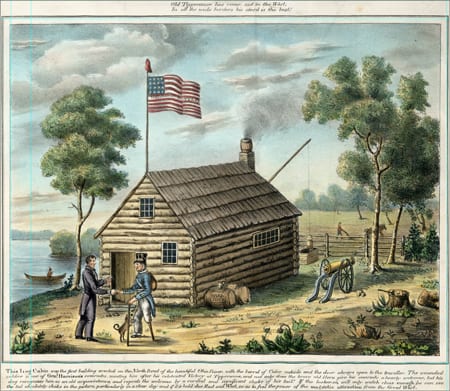
Like the GVII-1 “Northbend” – “Tippecanoe” figural cabin, our GX-22 flask represents everything great about our hobby. The color print above is titled “Old Tippecanoe has come out in the West; in all the wide borders, his steed is the best!” The accompanying text reads, “This Log Cabin was the first building erected on the North Bend of the beautiful Ohio River, with a barrel of Cider outside and the door always open to the traveller (sic). The wounded soldier is one of Gen’l Harrison’s comrades, meeting him after his celebrated Victory at Tippecanoe, and not only does the brave old Hero give his comrade a hearty welcome, but his dog recognizes him as an old acquaintance and repeats the welcome by a cordial and significant shake of his tall! If the looker-on only watches close enough, he can see the tail absolutely shake in the picture, particularly on a clear day and if it is held due East and West, so as to feel the power of the magnetic attraction from the Great West.”
“Tippecanoe” is a nickname for William Henry Harrison from his role in the Battle of Tippecanoe. Harrison was also the ninth president of the United States from March 1841 to April 1841. Harrison was born in Charles City County, Virginia, the son of Founding Father Benjamin Harrison V and the paternal grandfather of Benjamin Harrison, the 23rd president of the United States. He was the last president born as a British subject in the Thirteen Colonies before the start of the Revolutionary War in 1775.
Harrison participated in the 1794 Battle of Fallen Timbers during his early military career, an American military victory that effectively ended the Northwest Indian War. Later, he led a military force against Tecumseh’s Confederacy at the Battle of Tippecanoe in 1811, where he earned the nickname “Old Tippecanoe.” He was promoted to major general in the Army in the War of 1812 and, in 1813, led American infantry and cavalry at the Battle of the Thames in Upper Canada.
William Henry Harrison was one of three opposition presidential candidates in 1836, coming in a respectable second behind Martin Van Buren. By 1840, with the nation in the grips of depression, Van Buren was vulnerable, and the opposition, now organized as the Whig Party, rallied behind Old Tippecanoe.
“Give him a barrel of hard cider and a pension…and take my word for it, he will sit the remainder of his days in his log cabin.” This was how one Democrat reacted to the news that William Henry Harrison would be the Whig candidate for president in 1840. It probably cost Martin Van Buren the election.
The campaign that followed was unprecedented, utilizing every available form of propaganda to mobilize voters. The Whigs turned the Democrats’ characterization of Harrison as an ignorant rustic to their advantage, transforming their candidate into a romantic figure, the soldier-statesman in homespun, a spokesman for the commoner.
The log cabin and cider barrel came to symbolize Harrison’s candidacy. The imagery was exploited to its full potential, appearing on everything from clothing buttons to dinnerware. Harrison toured the country and spoke before crowds of thousands, the first candidate to stump on his own behalf.
William Henry Harrison’s song “Tippecanoe and Tyler Too” popularized music as a campaign tool. The song’s lyrics speak of a “ball rolling on” for Harrison. This wasn’t a metaphor; the campaign used an actual ball covered in issues from the campaign.
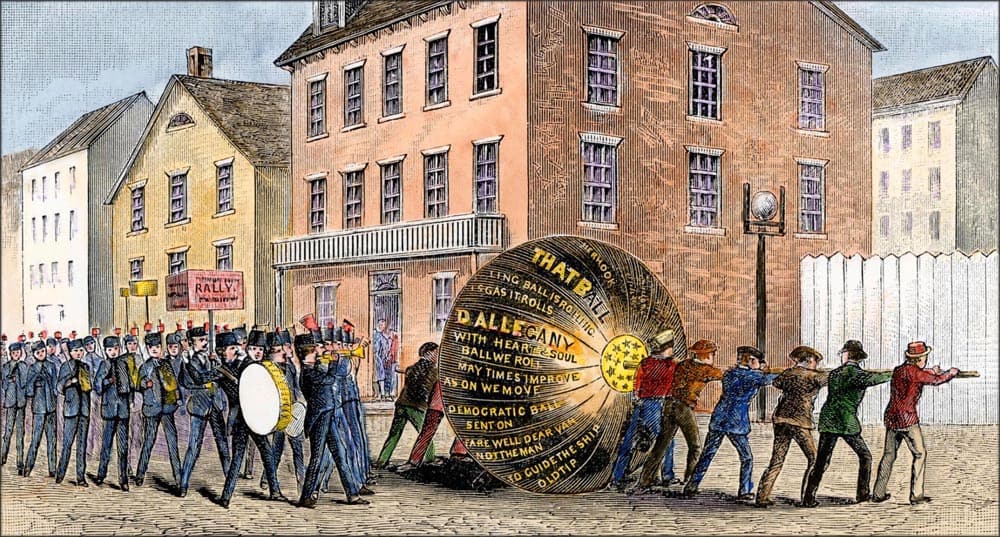
Flasks of whiskey were made to commemorate the story, and by the end of the campaign, there were parades miles long of voters singing, drinking, and chanting, “Tippecanoe and Tyler Too!” John Tyler of Virginia was Harrison’s running mate. The strategy worked, Harrison won the election, and the Whigs took both houses of Congress.
See the museum example of a GVII-1 “Northbend” – “Tippecanoe” cabin.
See the museum example of a GVII-2 “Tippecanoe” cabin.
Primary Image: GX-22 “Hard Cider” – Log Cabin Historical Flask imaged on location by Alan DeMaison, FOHBC Virtual Museum Midwest Studio
Support Images: Auction Lot 84: “Hard Cider” – Log Cabin Historical Flask, early Pittsburgh district, Pittsburgh, Pennsylvania, 1820-1840. Medium bluish aquamarine, sheared mouth – pontil scar, pint. GX-22 Extremely rare. Strong mold impression. Fine condition. Purchased from George McKearin, ex Merritt Vanderbilt collection, Clarissa Vanderbilt Dundon collection. – Norman Heckler Jr. & Sr., Norman C. Heckler & Company, Auction #108
Support Images: Auction Lot 38: “Hard Cider” – Log Cabin Historical Flask, early Pittsburgh district, Pittsburgh, Pennsylvania, 1820-1840. Aquamarine, sheared mouth – pontil scar, pint; (some exterior high point wear, mostly on the barrel). GX-22 A rare, historically important and desirable flask. Fine condition. – Norman Heckler Jr. & Sr., Norman C. Heckler & Company, Auction #128
Support Images: Auction Lot 47: “Hard Cider” With Flag, Cider Barrel, And Flower – Log Cabin Historical Flask, early Pittsburgh district, Pittsburgh, Pennsylvania, 1820-1840. Ice blue, sheared mouth – tubular pontil scar, pint. GX-22 Strongly embossed, strong color, fine example. Ex Dr. Charles Osgood collection, Warren “Bud” Lane collection. – Norman Heckler Jr. & Sr., Norman C. Heckler & Company, Auction #100
Support: Reference to American Bottles and Flasks and Their Ancestry by Helen McKearin and Kenneth M. Wilson, Crown Publishers, New York, 1978.
Join the FOHBC: The Virtual Museum is a project of the Federation of Historical Bottle Collectors (FOHBC). To become a member.

